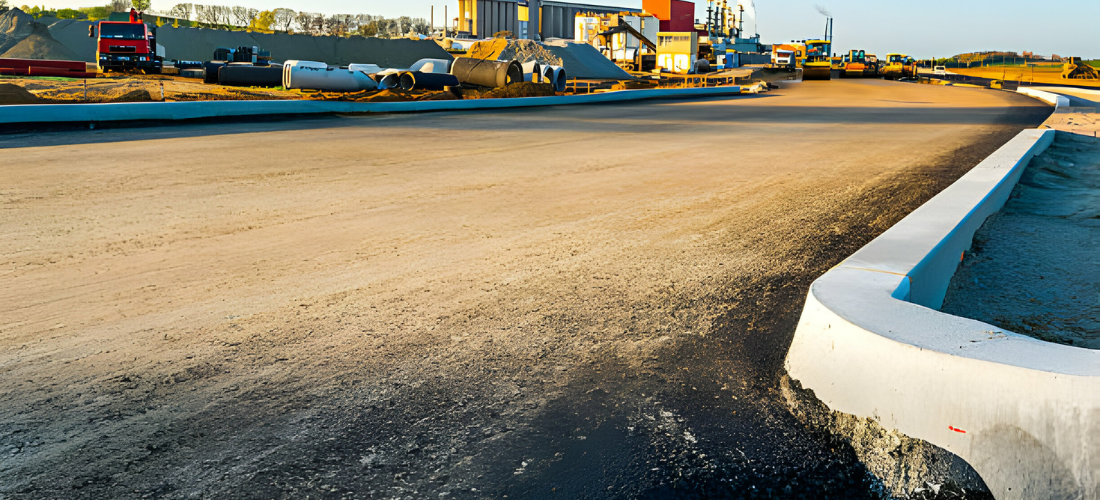India’s vast network of roads plays a crucial role in connecting communities,
facilitating trade, and driving economic growth. However, maintaining this extensive
infrastructure presents significant challenges, including limited budgets and the need
for cost-effective preservation techniques. Microsurfacing has emerged as a
promising solution, offering a sustainable approach to extending the lifespan of roads
and improving their performance. In this article, we’ll delve into the advancements,
applications, and impact of microsurfacing in India’s infrastructure development.
Advancements in Microsurfacing Technology
In recent years, significant advancements have been made in microsurfacing
technology, enhancing its effectiveness and versatility. These advancements include:
- Polymer-Modified Emulsions: Polymer-modified asphalt emulsions improve the
durability and flexibility of microsurfacing treatments, allowing for better adhesion to
the road surface and increased resistance to traffic and weathering. - High-Quality Aggregates: The use of high-quality aggregates in microsurfacing
mixtures ensures a smooth, uniform surface with excellent skid resistance and
durability. - Improved Application Techniques: Advanced equipment and application
techniques enable precise control over the placement and thickness of
microsurfacing treatments, resulting in smoother and more consistent results. - Environmental Considerations: Environmentally friendly formulations and
materials reduce the carbon footprint of microsurfacing projects, aligning with India’s
commitment to sustainable development.
Applications of Microsurfacing in India
Microsurfacing offers versatile applications across a wide range of road types and
conditions in India, including: - Urban Roads: Microsurfacing is well-suited for urban roads with moderate traffic
volumes, where maintaining smoothness, skid resistance, and aesthetics is
essential. - Rural Highways: In rural areas, microsurfacing helps preserve the surface of low-
traffic highways, preventing deterioration and reducing the need for costly repairs. - Residential Streets: Microsurfacing treatments are commonly used on residential
streets and housing colonies, providing a durable and cost-effective surfacing
solution. - Industrial Facilities: Microsurfacing is also applied in industrial areas and
commercial complexes, where heavy traffic and harsh operating conditions require
robust pavement preservation measures.
Impact on Infrastructure Development
The widespread adoption of microsurfacing in India has had a significant impact on
infrastructure development, including: - Extended Pavement Life: Microsurfacing treatments extend the lifespan of roads
by protecting the surface from moisture intrusion, oxidation, and wear-and-tear,
reducing the frequency of rehabilitation and reconstruction projects. - Cost Savings: By preventing premature pavement deterioration and minimizing
the need for major repairs, microsurfacing offers substantial cost savings over the
lifecycle of road infrastructure, freeing up resources for other development priorities. - Improved Safety: The skid-resistant surface provided by microsurfacing
treatments enhances safety for motorists, reducing the risk of accidents and
improving overall road performance. - Sustainable Development: Microsurfacing aligns with India’s sustainability goals
by reducing the environmental impact of road maintenance activities through the use
of eco-friendly materials and techniques.
Conclusion
Microsurfacing has emerged as a valuable tool in India’s infrastructure development
toolkit, offering cost-effective solutions for preserving and maintaining roads. With
advancements in technology and widespread applications across urban and rural
areas, microsurfacing is playing a vital role in extending the lifespan of road
infrastructure, improving safety, and promoting sustainable development. As India
continues to invest in its transportation network, microsurfacing will remain a key
component of its efforts to create smoother, safer, and more sustainable roadways
for the benefit of all citizens.

